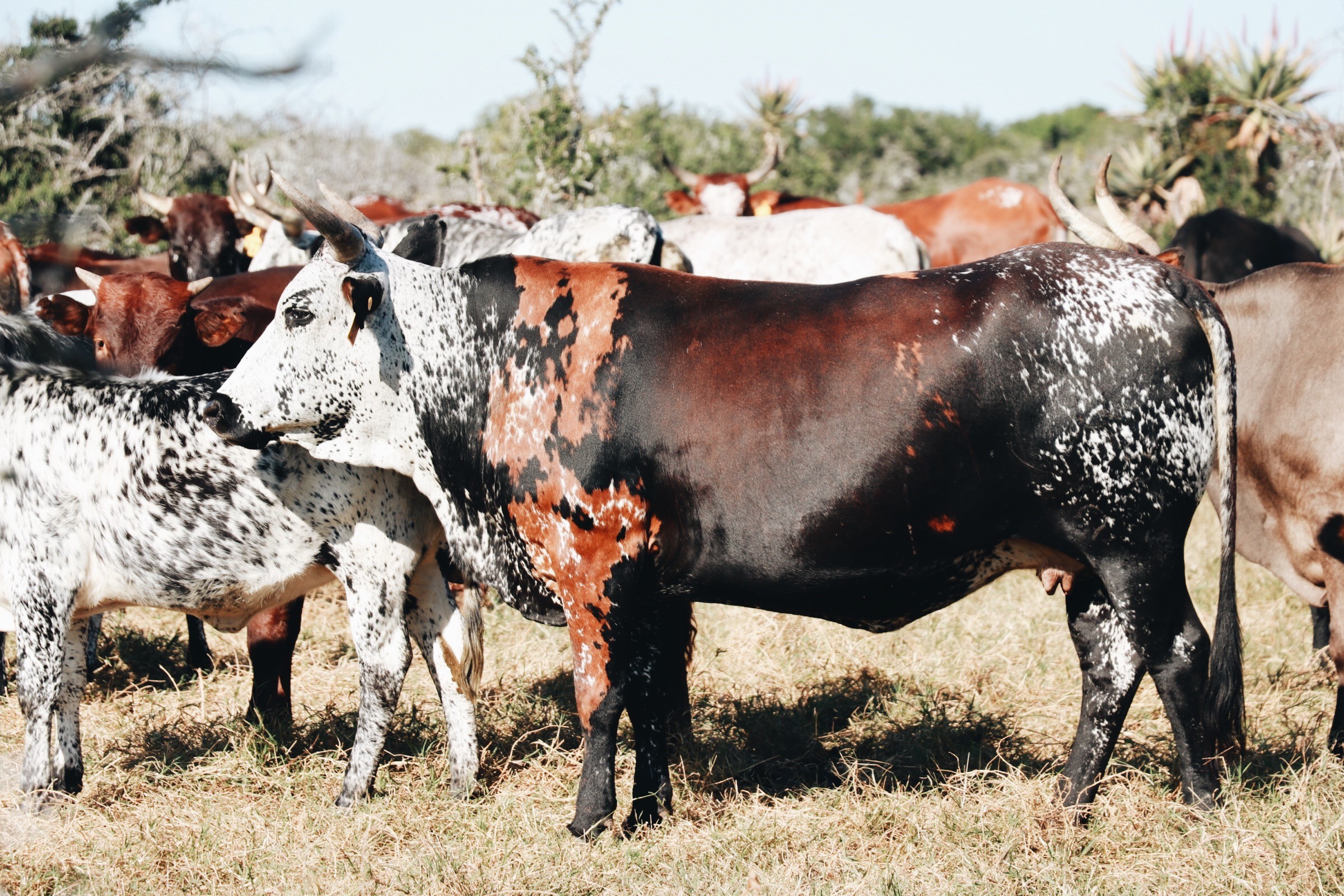
Glen Muir, the home of Qhina Ngunis.
Qhina Ngunis was started in early 2004. Our cattle run near Fort Beaufort in the famous Smaldeel area of the Eastern Cape. This ground forms part of the well known 45000ha Kat River Conservancy and apart from cattle carries an abundance of wildlife.
Veld Type
The veld is predominantly Eastern Cape False Thorn Veld. Average annual rainfall is about 450mm. This falls mostly in summer temperatures can be well above 40 degrees C. This area is fantastic cattle country, provided that the breed you keep can survive severe periodic droughts, high tick/parasite levels their associated diseases.
Health and Disease
Our cattle run on virulent Heart water, Gall sickness and Red water veld. Dipping either by plunging or spot treatment is done “when necessary” to prevent tick damage. Cattle are immunised annually against black quarter, anthrax and botulism.
Breeding Herd
From the outset we have focused on acquiring only top quality Ngunis. Females – Our first cows came from Mr. Victors Biggs’ dispersal sale. We have since bought cattle from many of the top herds in the country. Sires – We have used sires from a variety of top Nguni breeders. Each bull has left his mark on out herd. Bulls have come from brand marks such as LP, TC, FF, GL, N, RT, RV, SK, DH, Q and EX
We make use of two 90-day breeding seasons (Nov to Jan and May to Jul). Single sire mating takes place during these periods after which the bulls are removed from the cows. Heifers are mated between 15 and 18 months and all females are expected to calve and rear a good calf, annually or be culled.
Selection
Our Ngunis are strictly selected to be functionally efficient based on the following factors.
General appearance – Animals must be well balanced and perfectly adapted with a smooth tick resistant hide and docile temperament. Bulls must be strongly masculine and females beautifully feminine, both with good capacity and strong muzzles.
Conformation – We look for a medium framed animal that is correctly proportioned. Strong emphasis is placed on beef qualities.
Growth – We want normal birth weights and rapid growth in all progeny. Heifers must reach a mateable weight between 15 and 18 months.
Production – This is based on fertility (ICP and age first calf), milk production, weaning index and growth of calves through to 18 months (Wean, 12M and 18M indices).
Performance Recording
We believe that, over time, we can improve our herd’s potential to produce beef, without detracting from its other desirable traits, (fertility, disease resistance, ease of calving etc.) by selection based, in part, on performance data. The best way to measure a dam’s milk production is by recording weaning weights and comparing wean direct and maternal EBV’s. Any calf performing at 10% or more below herd average is culled. In most cases the dam is also culled. Performance based selection is again done at 12 and 18 months so as to compare growth of the calves and the growth potential of future calves of the dams and sires in our herd.
It is by culling the under-performers that we will improve our beef production.
By culling the extreme performers we will maintain our desired frame size, fertility, disease resistance, efficiency etc. that we chose the Nguni for in the first place.
Objectives
Our objective is to breed medium framed, well fleshed, highly fertile, highly efficient, and disease resistant cattle, to supply replacements for our own herd and those of fellow Nguni breeders.
Bushkloof Nguni Stud
Vernon & Julie Sparks, Cell: 083 277 0762
Tel/Fax: 046 645 1514,
Email: bushkloof@albanynet.co.za